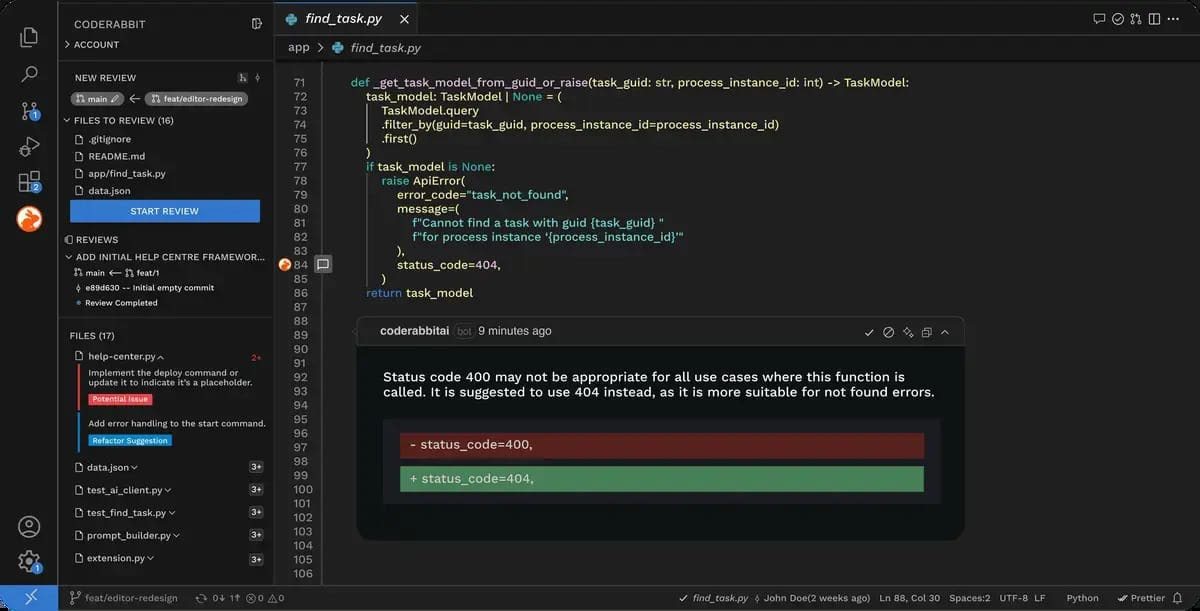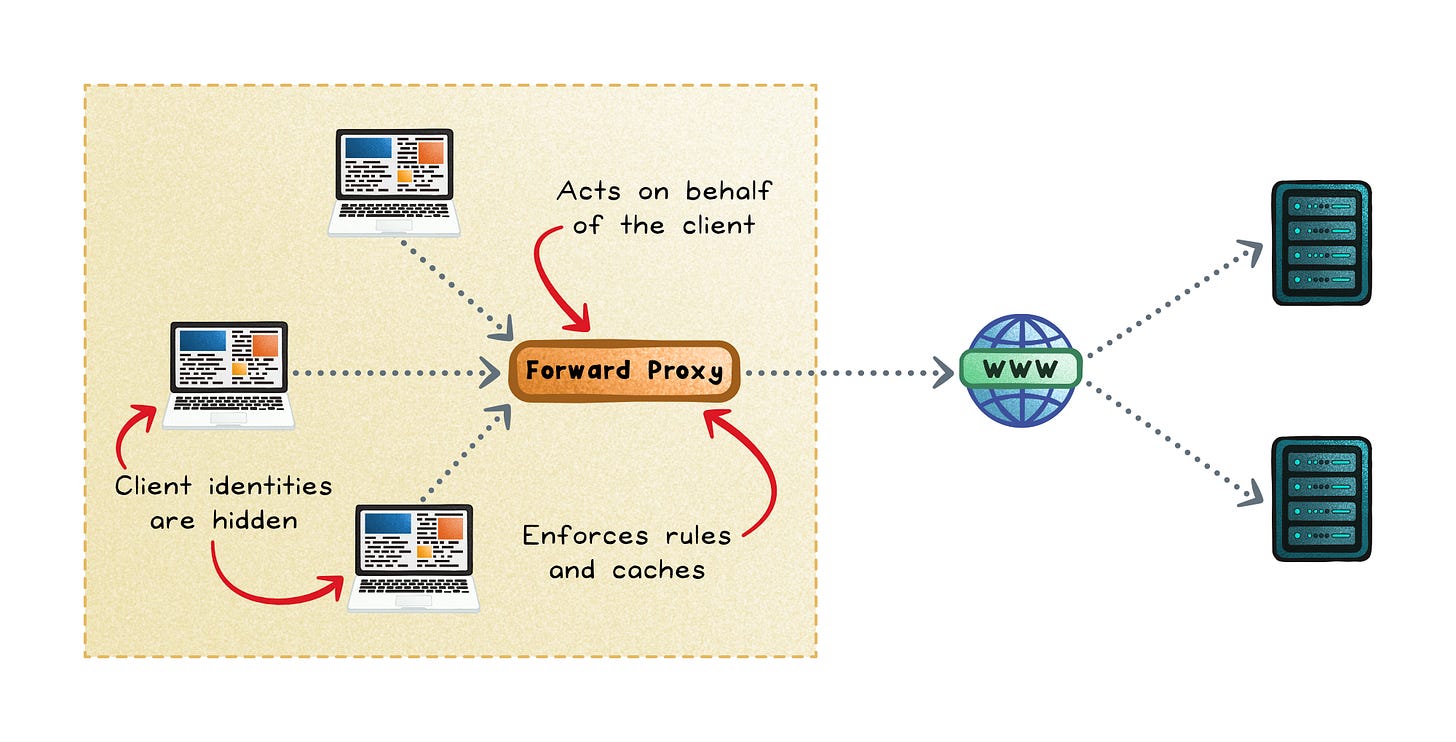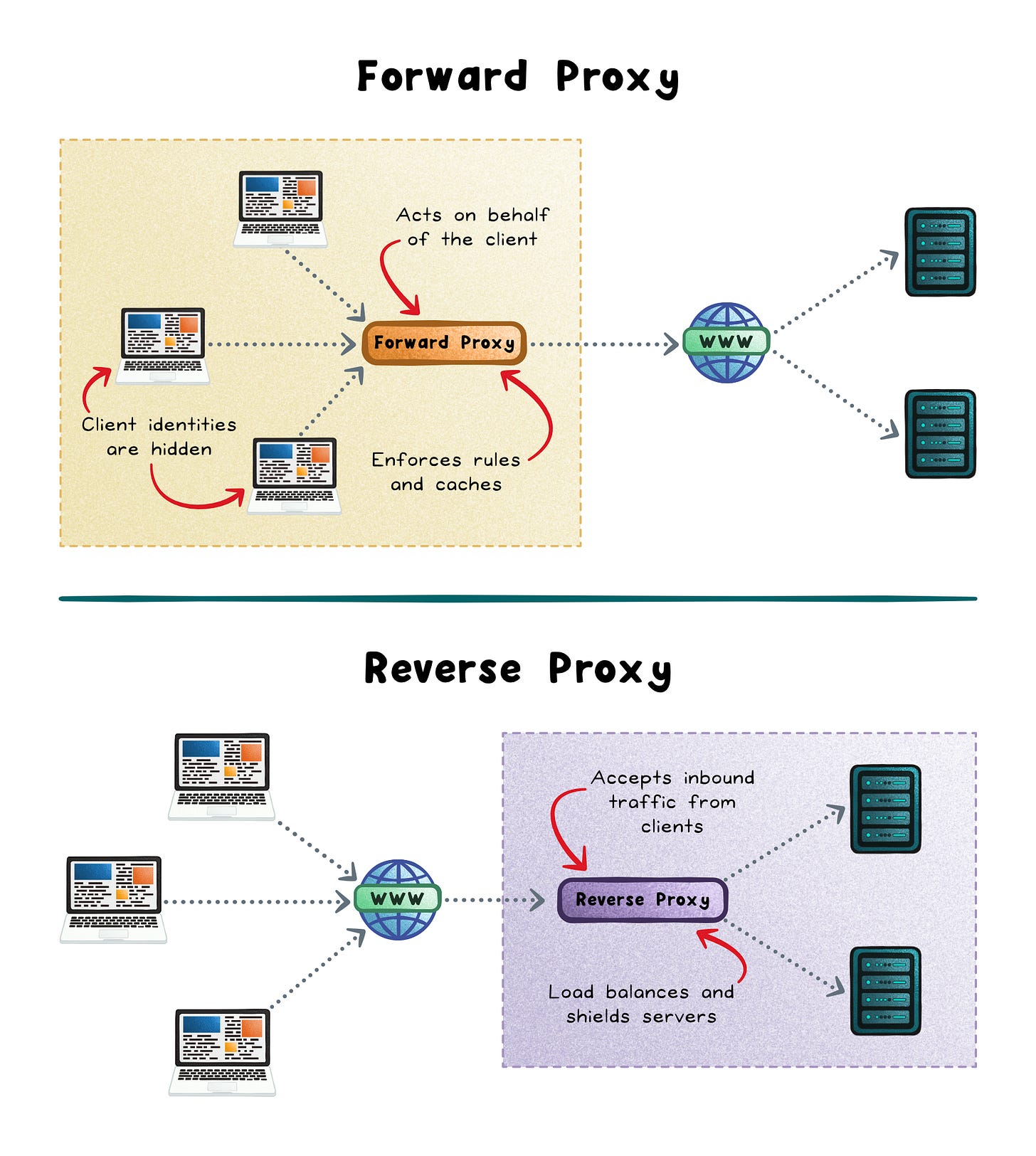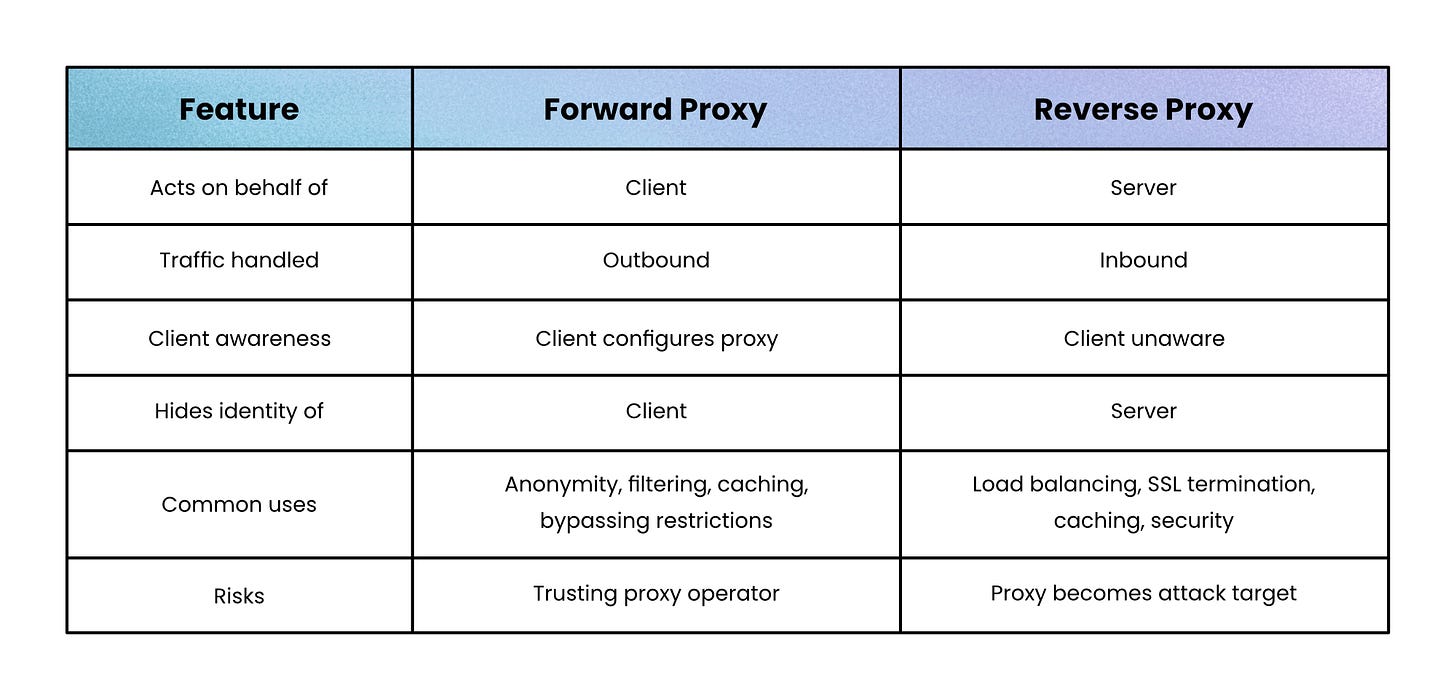Forward Proxy vs Reverse Proxy
(4 Minutes) | Core Ideas, Benefits, Trade-offs, Where and When to Use Each
Get our Architecture Patterns Playbook for FREE on newsletter signup:
Free AI Code Reviews in your IDE Powered by CodeRabbit
Presented by CodeRabbit
CodeRabbit brings AI-powered code reviews directly into VS Code, Cursor, and Windsurf. Get free, real-time, context-aware feedback on every commit before the PR. Helps you catch bugs and code smells, and even suggests refactorings. Supports all programming languages; use AI coding agents like Cline to fix issues discovered.
Forward Proxy vs Reverse Proxy
Many developers confuse forward proxies with reverse proxies.
Both sit between clients and servers, both relay requests, and both can cache or filter traffic. But their purposes could not be more different.
The key difference is simple:
A forward proxy acts on behalf of the client.
A reverse proxy acts on behalf of the server.
Understanding this distinction is crucial when designing secure, scalable, and efficient systems. Let’s break it down.
Forward Proxy
A forward proxy sits between clients and the open internet. The client configures its device or app to route traffic through the proxy, which then makes requests on the client’s behalf.
It’s like using a VPN service. Websites see the VPN’s IP, not yours.
What it Does
Hides identity → The server only sees the proxy’s IP, not the client’s.
Enforces rules → Organizations can block or allow certain websites.
Caches → Frequently accessed content is stored and reused.
Bypasses restrictions → Users can access geo-blocked or censored sites.
Centralizes access → All outbound traffic can be monitored in one place.
When it Shines
Filtering traffic → A school blocking access to certain websites.
Anonymity and privacy → A journalist hiding their location.
Reducing bandwidth costs → A corporate network caching OS updates.
The Trade-offs
Limited protection → It doesn’t stop malware.
Possible bottlenecks → All traffic passes through one point.
Trust risk → The proxy can log or alter data.
In short, forward proxies are for controlling and anonymizing client traffic.
Reverse Proxy
A reverse proxy flips the direction. It sits in front of servers and accepts inbound traffic from clients. To the outside world, the proxy looks like the server itself.
A reverse proxy works like a load balancer. Clients hit a single endpoint, but requests are distributed across multiple backend servers.
What it Does
Load balances → Distributes traffic across multiple servers.
Shields servers → Hides backend IP addresses from attackers.
Handles TLS → Manages encryption/decryption centrally.
Caches and compresses → Reduces bandwidth and improves speed.
When it Shines
Handling traffic surges → An e-commerce site managing Black Friday traffic.
Ensuring high availability → A SaaS provider maintaining uptime.
Centralizing TLS termination → A company offloading encryption from its backend servers.
The Trade-offs
Single point of failure → If the proxy goes down and isn’t replicated, the entire service becomes unreachable.
Latency overhead → Every request takes one extra network hop through the proxy.
Operational complexity → Proxies require careful setup, tuning, and monitoring to avoid becoming bottlenecks or attack targets.
In short, reverse proxies are for scaling, securing, and managing server-side infrastructure.
Recap
Choosing between a forward proxy and a reverse proxy comes down to where your challenge lies. If your concern is outbound traffic; privacy, control, or bypassing restrictions. Use a forward proxy.
If it’s inbound traffic; scaling servers, shielding infrastructure, or centralizing SSL. Use a reverse proxy.
The right choice depends not on the technology itself but on which side of the network you need to strengthen.
Subscribe to get simple-to-understand, visual, and engaging system design articles straight to your inbox:







